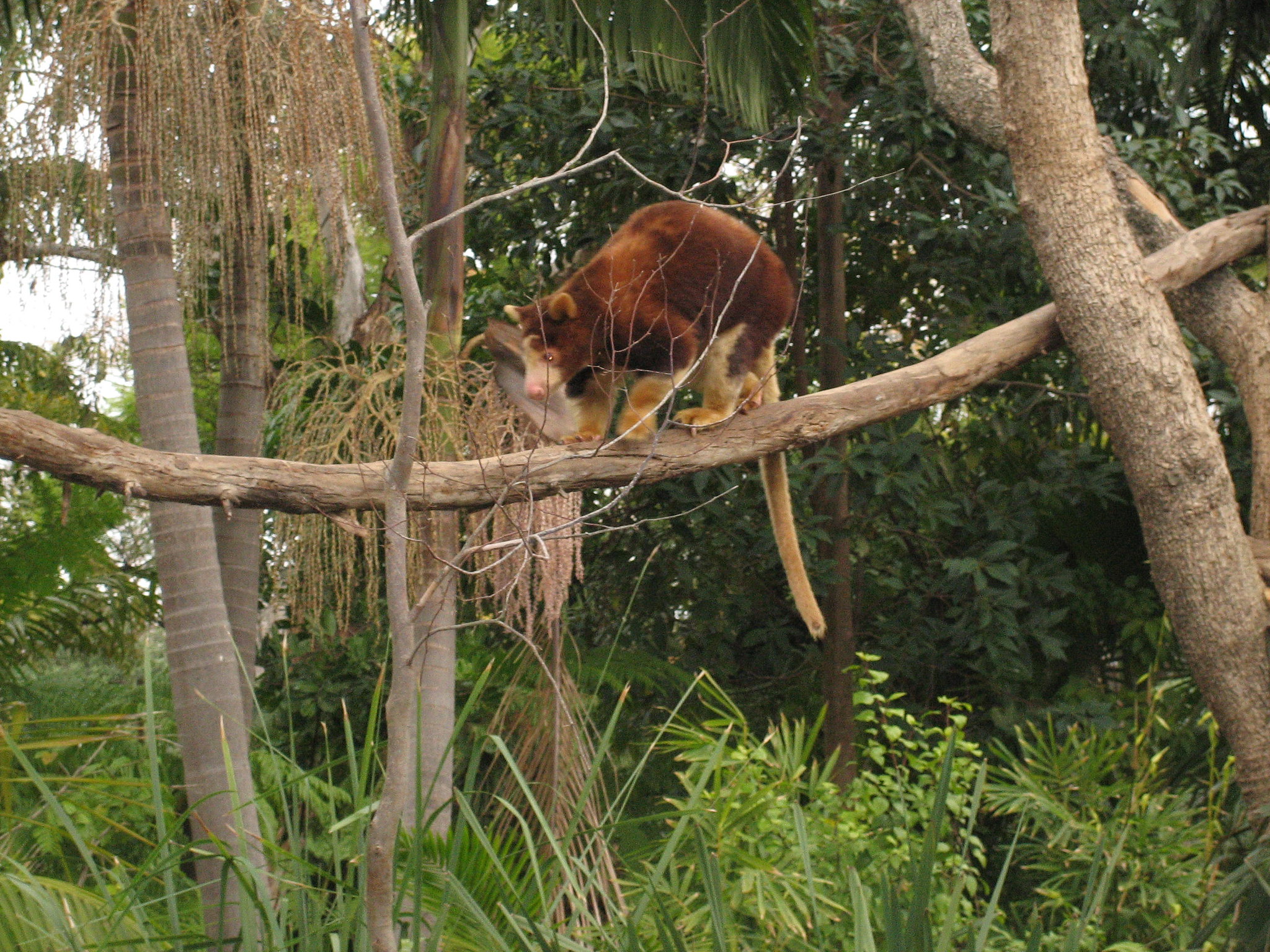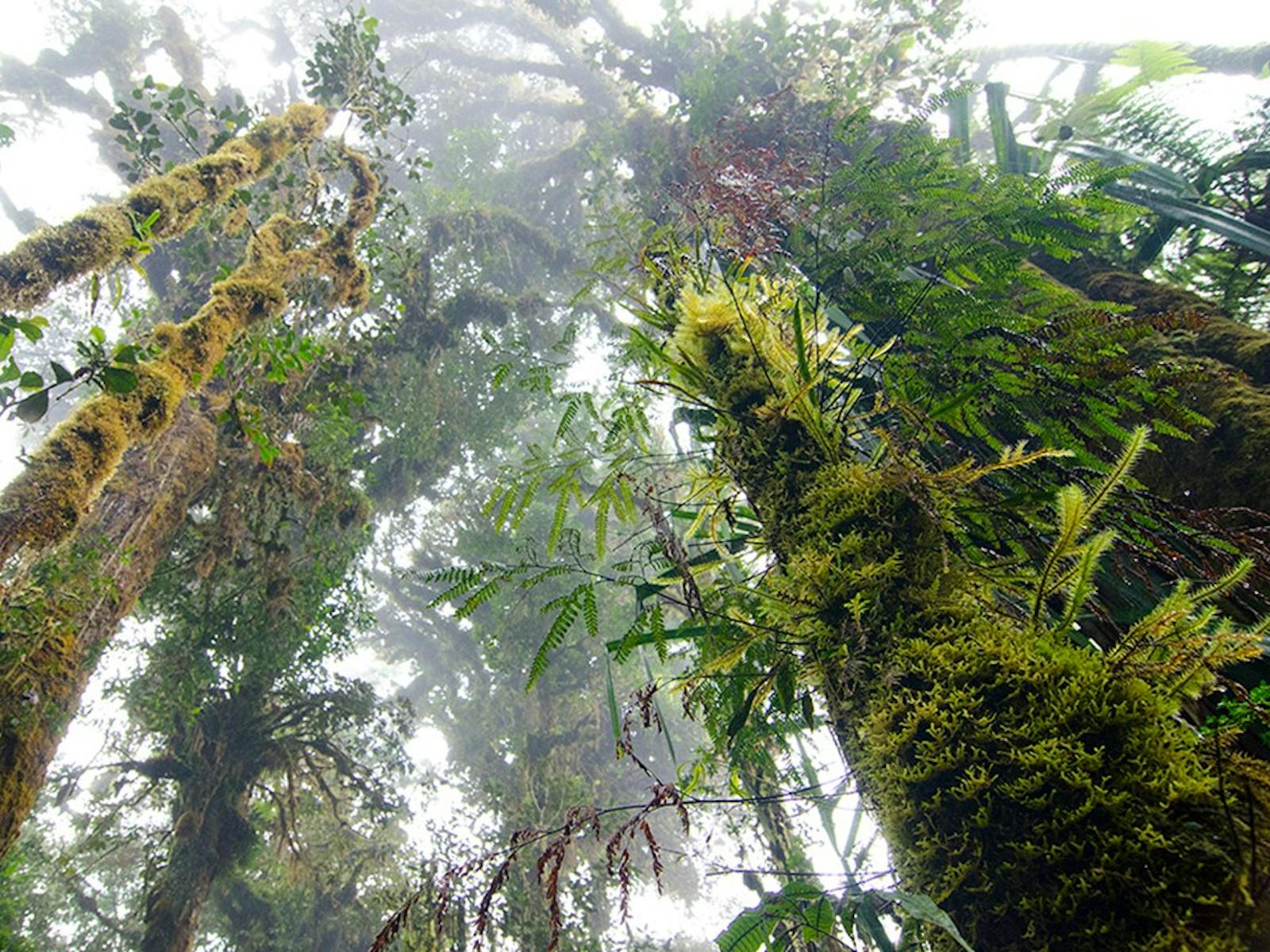Huon Peninsula Montane Rainforests
The ecoregion’s land area is provided in units of 1,000 hectares. The conservation target is the Global Safety Net (GSN1) area for the given ecoregion. The protection level indicates the percentage of the GSN goal that is currently protected on a scale of 0-10. N/A means data is not available at this time.
Bioregion: New Guinea & Surrounding Islands (AU13)
Realm: Australasia
Ecoregion Size (1000 ha):
1,656
Ecoregion ID:
141
Conservation Target:
85%
Protection Level:
0
States: Papua New Guinea
The Huon Peninsula Montane Rain Forests blanket one of the most spectacular montane landscapes on the planet. The three mountain ranges―the Finisterre (to 4,176 meters), Saruwaged (to 4,122 meters), and Cromwell and Rawlinson ranges―rise sharply from a narrow coastal plane. The Huon Mountains are isolated from other montane regions by the lowland barrier of the Ramu/Markham Basin lowlands.
This isolation has led to the evolution of a highly distinct flora and fauna. For example, the Huon Mountains are home to four endemic bird species—spangled honeyeater, Huon melidectes, Huon astrapia, and emperor bird-of-paradise. Wahnes’s parotia is endemic to the Huon and nearby Adelbert Mountains. The Finisterre Range, covering a third of the ecoregion, is home to more mainland endemic species of warm-blooded vertebrates than any similar-sized area in Papua New Guinea.

The flagship species of the Huon Peninsula Montane Rainforests ecoregion is the Huon tree-kangaroo. Image credit: Flickr, Sheila Thomson (CC by 2.0)
The climate of the ecoregion is tropical wet, which is characteristic of this part of Melanesia, located in the western Pacific Ocean north of Australia. This portion of New Guinea is a very active tectonic area with a complex geologic history. The surface geology of this ecoregion is a combination of Miocene siltstone, conglomerate, volcanics, and limestone. The Finisterre Range, in particular, consists of one steep ridge of limestone.
The vegetation of this ecoregion is mostly tropical wet evergreen forest with a large percentage of tropical montane evergreen forest and a small amount of limestone forest. The forest is low-canopied and diverse in tree taxa, such as Nothofagus, Lauraceae, Cunoniaceae, Dacyrdium, Elaeocarpaceae, Lithocarpus, Castanopsis, and Syzygium. Scattered locations support dense stands of tall Araucaria. The Cromwell Ranges are the only extensive unlogged Dacrydium forests in the Southern Hemisphere. Cloud forests heavily laden with moss are characteristic at higher elevations. There are 81 mammal species in this ecoregion, including six species that are endemic or near-endemic. The Huon tree-kangaroo (Dendrolagus matschiei) is restricted to the peninsula forests at higher elevations. The endangered Papuan long-beaked echidna is resident, as well.
Except for some forest loss along the southern part, habitat modification of the narrow coastal shelf, and the Buweng Timber Rights Purchase (using helicopters), most of the ecoregion's natural habitat is intact, especially the Huon Highlands. Two proposed large protected areas (Finisterre and Mt. Bangeta) cover about 18 percent of the ecoregion area, but recent protected area assessments suggest their boundaries, gazettement, and management are presently unconfirmed.
The YUS Conservation Area engages local communities in forest and tree kangaroo conservation. This community-based protected area covers a large altitudinal range encompassing a wide range of distinct communities of plants and animals restricted to certain elevations. Forests remain lost at the lower elevations adjacent to largely cleared lowlands, and helicopter logging contributes to degradation. Hunting of tree kangaroo and echidna can diminish vulnerable populations over time.
Priority conservation actions for the next decade
- Clarify and secure a commitment for protected area designation and management, emphasizing strengthening the YUS Conservation Area as a model for conservation in the peninsula and in Papua New Guinea.
- Encourage representing a full range of natural communities along elevational gradients in protected areas.
- Discourage the expansion of logging operations.
-
-
- Adams VM, VI Tulloch, HP Possingham. 2017. Land-sea conservation assessment for Papua New Guinea. A report on the work undertaken to fulfil the terms of the project Review and Integration of the Terrestrial and Marine Program of Works on Protected Areas. PNG CEPA, University of Queensland, Global Environment Facility, UNDP, Brisbane. 75 pp.
- Beehler BM, TK Pratt. 2016. Birds of New Guinea Distribution, Taxonomy, and Systematics. Princeton University Press, Princeton.
- BirdLife International (2018) Endemic Bird Areas factsheet: Adelbert and Huon ranges. Accessed 1 June 2018 at http://www.birdlife.org
-
Cite this page: Huon Peninsula Montane Rainforests. Ecoregion Snapshots: Descriptive Abstracts of the Terrestrial Ecoregions of the World, 2021. Developed by One Earth and RESOLVE. https://www.oneearth.org/ecoregions/huon-peninsula-montane-rainforests/
-



